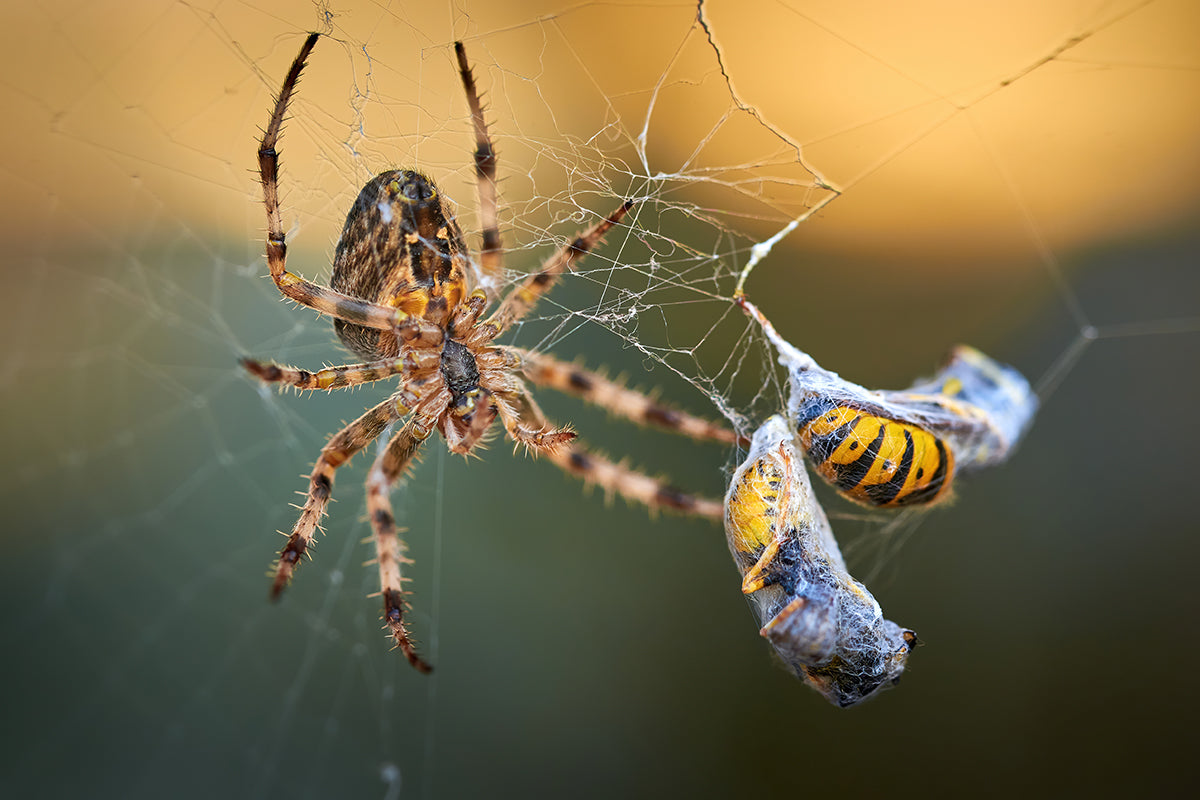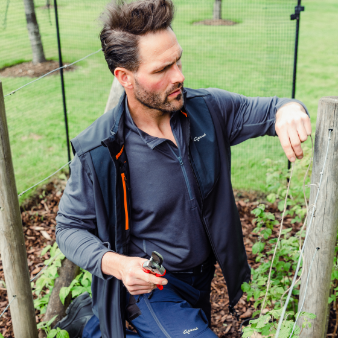Wildlife in the garden - spiders

With over 650 species of spider in the UK it’s surprising we don’t see a wider range of species when out and about in the garden. Of course, autumn is the perfect time to spot spider activity as their webs become dotted with pearls of dew or rimed with frost on cold mornings. The spider most likely to be encountered is the European garden spider Araneus diadematus. Harmless, and sometimes surprisingly large, its bulbous abdomen is decorated with a spotted white cross. Don’t confuse it with the noble false widow Steatoda nobilis which has a venomous bite, a species we have encountered once or twice in the Genus garden.
Alarmed by this discovery we carried out research. The Natural History Museum says the venom is not particularly potent with the pain no worse than a wasp sting and only lasting for 12 hours, rarely more than 24. We have since discovered that secondary infection isn’t uncommon and in some cases can result in hospitalisation.With over 650 species of spider in the UK it’s surprising we don’t see a wider range of species when out and about in the garden. Of course, autumn is the perfect time to spot spider activity as their webs become dotted with pearls of dew or rimed with frost on cold mornings.
The spider most likely to be encountered is the European garden spider Araneus diadematus. Harmless, and sometimes surprisingly large, its bulbous abdomen is decorated with a spotted white cross. Don’t confuse it with the noble false widow Steatoda nobilis which has a venomous bite, a species we have encountered once or twice in the Genus garden. Alarmed by this discovery we carried out research. The Natural History Museum says the venom is not particularly potent with the pain no worse than a wasp sting and only lasting for 12 hours, rarely more than 24. We have since discovered that secondary infection isn’t uncommon and in some cases can result in hospitalisation.
The woodlouse spider Dysdera crocata preys on woodlice and is another one of a dozen UK species that have the ability to bite a human. Inhabiting areas where woodice abound they’ll often be found under flower pots or in damp corners of a shed.
Another spider we have spotted in the Genus garden, though just the once, is the flower crab spider, Misumena vatia. These spiders have a globular abdomen, often appearing white, with longer front legs. They're easiest to spot between April and September during daylight hours where they sit inside a flowerhead patiently waiting for unsuspecting pollinators to arrive. The females have the ability to change colour to match their surroundings, a skill the smaller males lack.
One spider that we’d love to see is the harmless wasp spider Argiope bruennichi. Its uniquely patterned abdomen is crossed with yellow and black bands which reflect UV light attracting inquisitive insects such as flies and moths. Originally from the Mediterranean it has made its way into southern England and is slowly spreading north.







